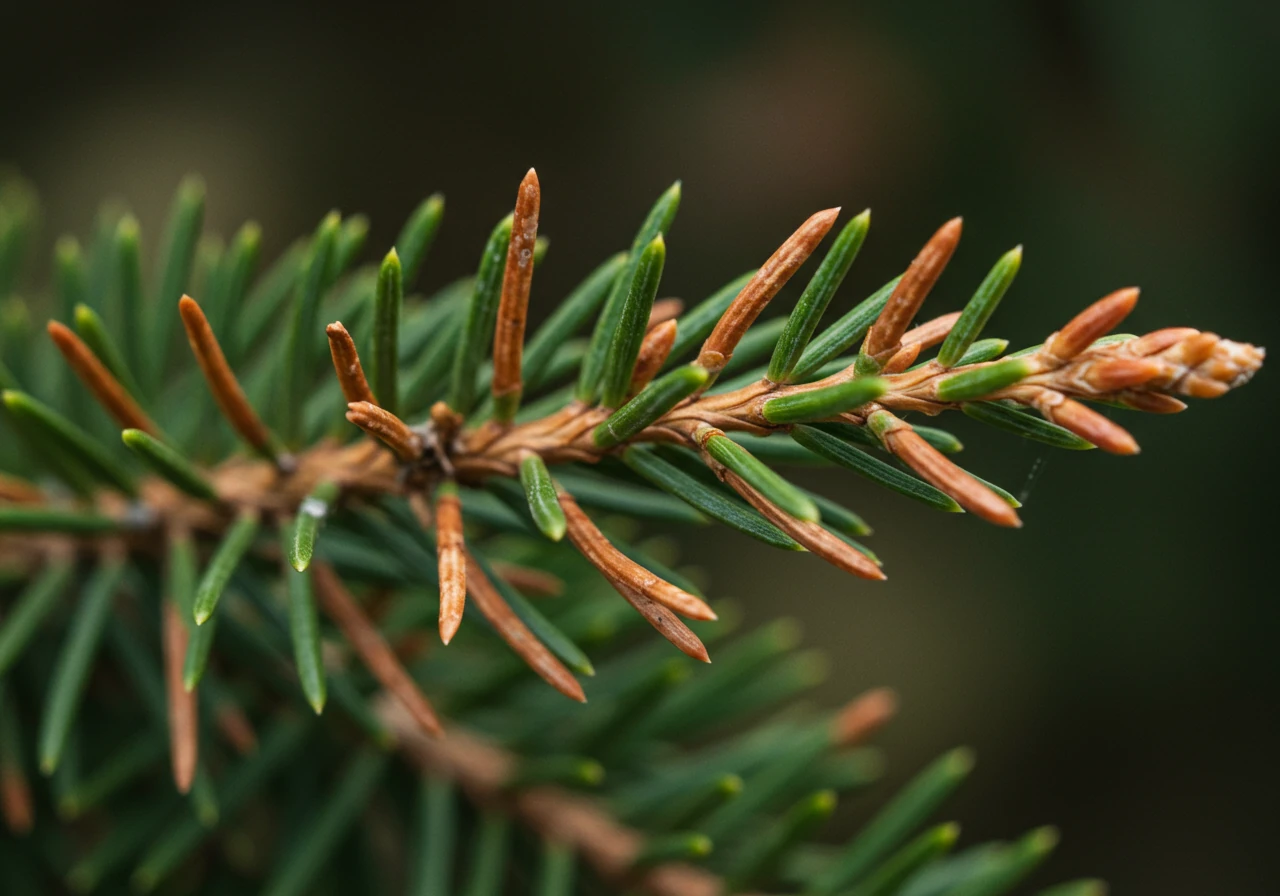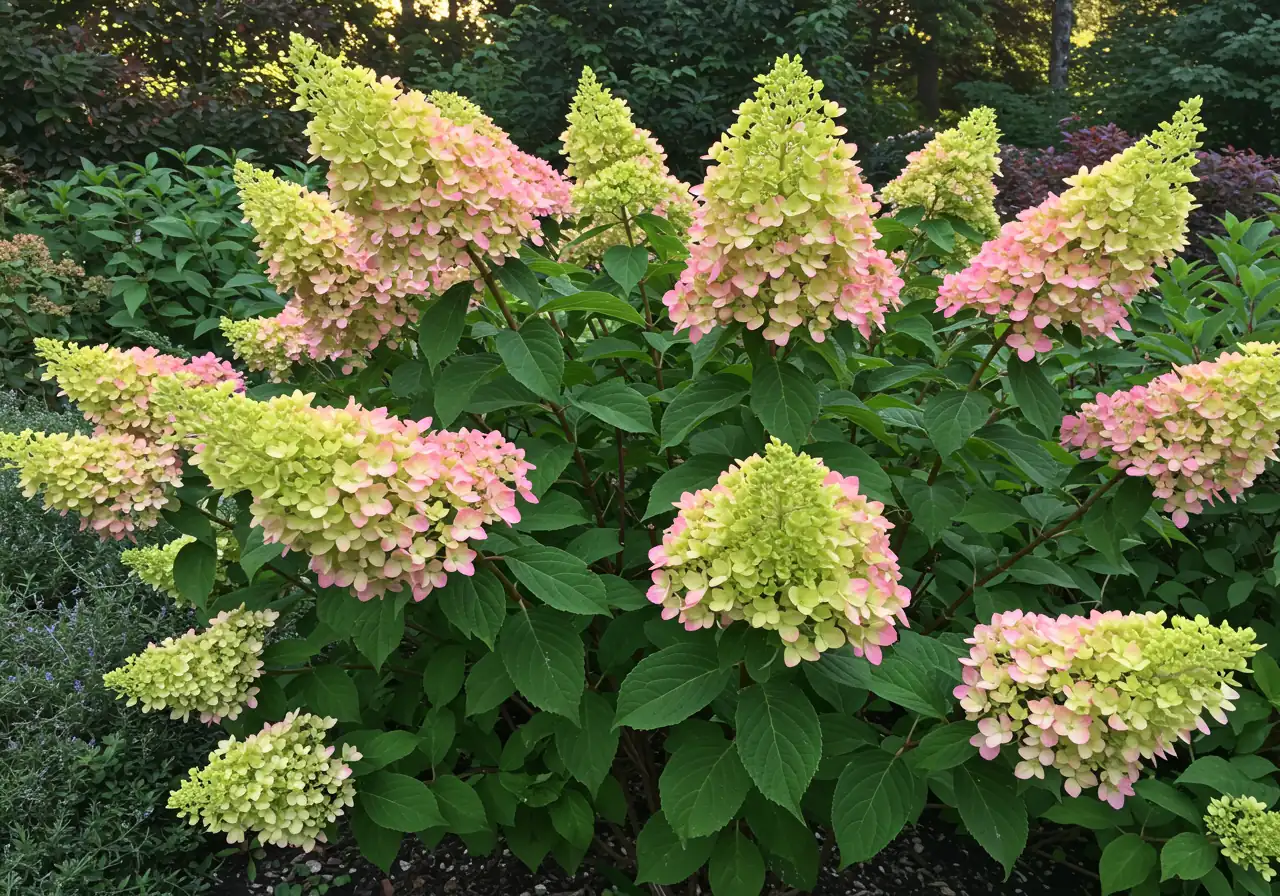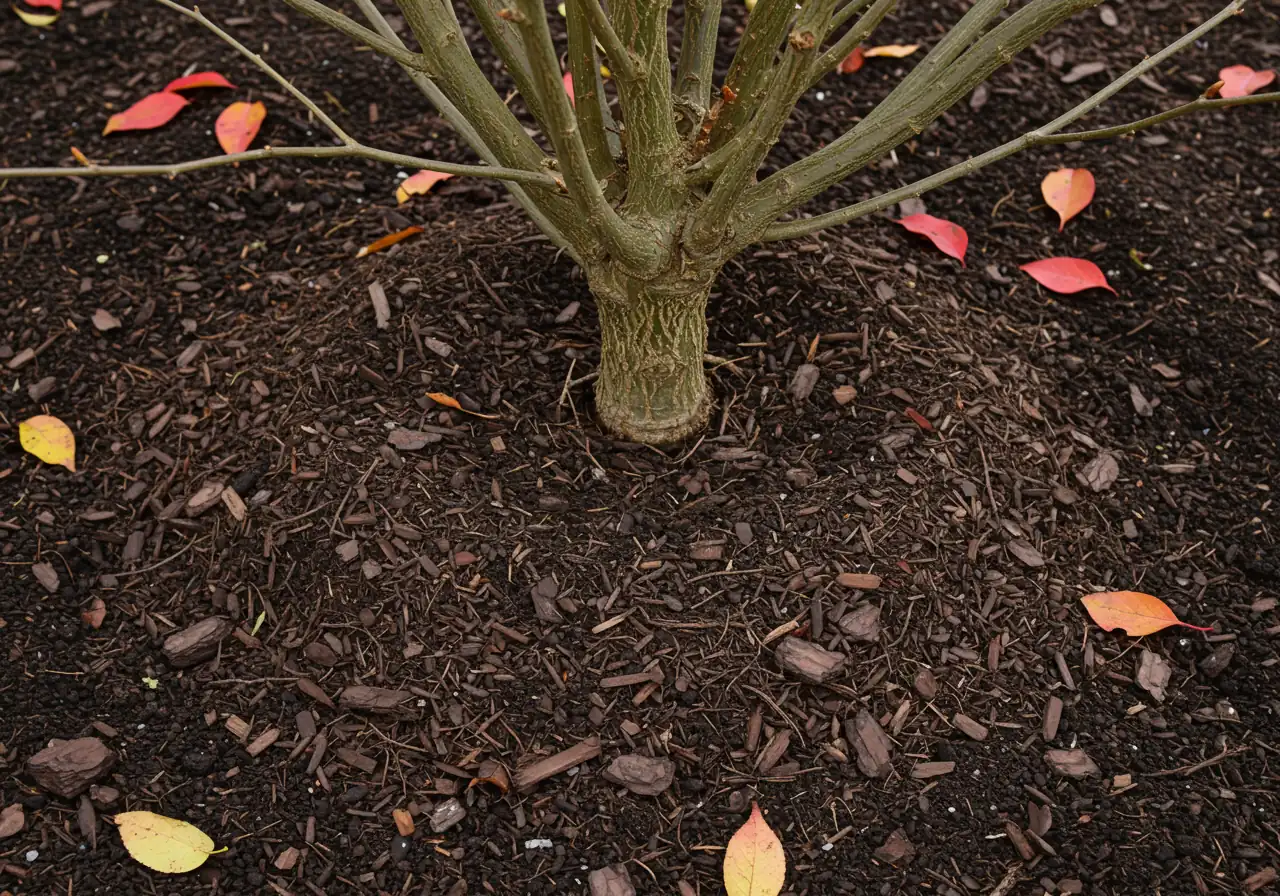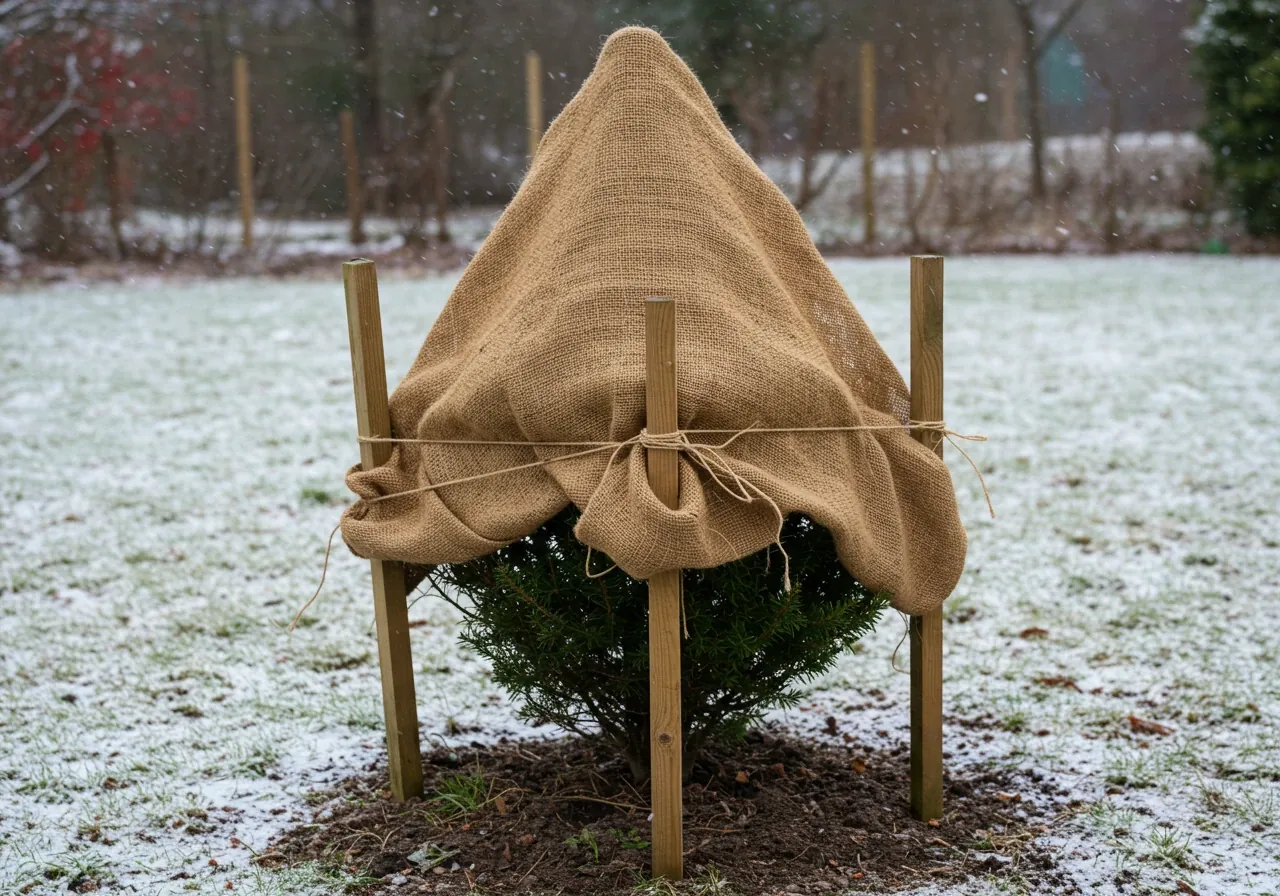Protect New Embrun Shrubs: First Winter Survival Guide
Quick Summary: Newly planted shrubs in Embrun need extra care for their first winter. Key steps include proper fall watering, mulching, avoiding fall fertilizer, using protective wraps like burlap for vulnerable plants, and patient spring assessment. Read on for detailed guidance!
- Understand Ottawa/Embrun winter challenges (frost heave, wind desiccation, snow load).
- Choose winter-hardy shrubs (Zone 5 or lower).
- Follow the essential fall prep checklist (watering, mulching, no fertilizer).
- Use physical protection (burlap, A-frames) when needed.
- Assess damage carefully in spring before pruning.
Planning your landscape or need help ensuring your plants are ready for the cold? Request a quote from Clean Yards today!
Introduction: Welcome to Embrun! Let’s Keep Those New Shrubs Cozy This Winter
Hey there, new Embrun homeowners, and welcome to the community! Settling into a new home is exciting, and chances are, you’re already thinking about beautiful landscaping to make your yard truly yours. Maybe you’ve even planted some fantastic new shrubs this past season? They look wonderful now, but their *very first winter* here in the Ottawa region can be a bit startling for them. Think of it like their first big Canadian winter experience – they need a little extra protection to stay cozy!
Whether you’re here in Embrun, down the road in Russell, or even out towards Barrhaven, our climate can bring serious cold, heavy snow, and tricky winds that young plants aren’t quite used to yet. Newly planted shrubs haven’t had a full season to establish deep roots, making them more vulnerable than their older, more settled neighbours. Checking out our Google My Business page might show you some examples of local gardens we care for!
But don’t fret! Protecting your leafy investments through their first winter isn’t complicated. We’re here to help you give your new shrubs the best possible start. This guide offers straightforward, practical tips to ensure they survive the freeze and burst back beautifully next spring. Let’s get them winter-ready!
Facing the Freeze: Understanding Winter’s Wrath in Ottawa and Embrun
Okay, let’s talk about what winter *really* means for your shrubs here in Ottawa and Embrun. While a snowy landscape is pretty, our Canadian winter packs a punch, and your plants feel it just like we do – maybe even more! Understanding these challenges is the first step to helping your green friends survive and thrive.

Think of our winter as a bit of a rollercoaster for plants. One day it’s freezing cold, the next it might thaw slightly, and then plunge back into a deep freeze. This freeze-thaw cycle is tough on plant roots. Water in the soil expands when it freezes, which can literally push plants *up* out of the ground. This is called *frost heave*, and it’s especially noticeable in heavier clay soils common around areas like Greely and Kars. When the ground thaws, the plant might not settle back properly, leaving roots exposed and vulnerable. Keeping soil stable is key, which is where things like mulch and following can make a big difference in your landscaping beds.
Then there’s the wind. Oh, the wind! It might just feel chilly to us, but for plants, especially evergreens, that wind whips away precious moisture from their leaves or needles. When the ground is frozen solid, the roots can’t draw up any more water to replace what’s lost. This leads to *winter desiccation*, which looks like brown, dry patches on your evergreens come spring – often called “winter burn.” Young shrubs, without deep root systems, are particularly susceptible.
Don’t forget the weight of it all! Heavy snow and, even worse, ice storms can pile up fast. While a blanket of snow can insulate the ground (that’s a plus!), too much heavy, wet snow or ice can bend and snap branches clean off. This is particularly true for shrubs with weaker wood or upright branching structures. Properly managing plant structure becomes important, which highlights not just for trees, but conceptually for larger shrubs too – reducing weak points helps prevent damage.
Finally, remember that a plant’s overall health going into winter significantly impacts its survival chances. Shrubs that were stressed during the growing season – maybe due to pests, disease, or lack of water – will have fewer energy reserves to withstand the cold. Dealing with summer problems proactively, , helps ensure plants are stronger when winter arrives. Giving them the right care in autumn is crucial; consider these to prepare them.
Facing the freeze requires a bit of planning, but understanding these specific winter challenges in Ottawa and Embrun helps you give your shrubs the best defence. If prepping your garden beds and plants feels overwhelming, remember that help is available through our comprehensive landscaping services.
Right Plant, Right Place: Choosing Winter-Hardy Warriors

You know, the *easiest* way to help your shrubs survive an Ottawa winter is… drumroll please… choosing the right shrubs in the first place! Seriously, setting your garden up for success starts *before* you even dig the hole. It’s like sending a soldier into battle with the right armour – you want plants naturally tough enough for our climate from day one.
So, how do you know if a plant is tough enough? Look for its “Hardiness Zone” rating on the tag. Think of it like a plant’s minimum winter coat requirement. Officially, Ottawa sits mostly in Zone 5a, but let’s be honest, some winters feel colder, and particularly windy or exposed spots in your yard might dip lower. To play it safe and give your plants the best chance, always aim for shrubs rated for Zone 5, or even better, Zone 4 or lower. These are your true *winter-hardy warriors*. Choosing plants rated for warmer zones (like Zone 6 or 7) is basically gambling against Mother Nature, and around here, she usually wins that bet! Consider looking at resources like Agriculture and Agri-Food Canada’s Plant Hardiness Zones map for reference.
What kind of warriors are we talking about? Thankfully, we have lots of great options that look fantastic and thrive here! Consider some of these reliable choices:
- Certain Hydrangeas (like the tough ‘Annabelle’ or many Panicle Hydrangeas like ‘Limelight’)
- Dependable Spirea varieties (many are practically bulletproof!)
- Colourful Dogwoods (especially Red Osier Dogwood for that pop of winter colour)
- Hardy Junipers and Cedars (evergreen staples)
- Fragrant Common Lilacs
- Tough-as-nails Potentilla
Panicle Hydrangea (‘Limelight’, ‘Quick Fire’, etc.)
Hardiness: Zone 3-4. Very reliable.
Features: Large, conical flower heads in summer/fall, sturdy stems. Tolerates full sun to part shade.
Winter Interest: Dried flower heads can look attractive in winter landscape.
Red Osier Dogwood (Cornus sericea)
Hardiness: Zone 2-3. Extremely hardy.
Features: Best known for its bright red stems in winter. Adaptable to various soil conditions, including moist areas.
Winter Interest: Brilliant red stems provide striking winter colour.
Common Lilac (Syringa vulgaris)
Hardiness: Zone 3. Very tough.
Features: Fragrant purple (or white/pink) flowers in late spring. Needs full sun for best flowering.
Winter Interest: Minimal, but very resilient structure.
Choosing hardy plants saves you time, money, and heartache down the road. It means less worry about winter damage and fewer plants needing replacement – helping you avoid the kind of major clear-outs sometimes handled by our Metcalf garden clean-up service or Embrun property cleanup service when unsuitable plants don’t make it. Hardy selections also tend to bounce back better in spring, simplifying tasks like those our Marionville yard cleanup service team assists with. Selecting the right plants is a cornerstone of smart landscaping, a key part of our comprehensive landscaping and garden services. If you’re ever scratching your head about which specific shrub would be happiest surviving winter in *your* yard’s unique conditions, feel free to reach out – you can even drop us a line via our estimate and feedback form with your questions! Choosing wisely now means enjoying beautiful, thriving shrubs for many Ottawa winters to come. For a look at how well-chosen plants integrate into designs, browse our Transformations gallery.
Tuck-In Time: Your Step-by-Step Fall Prep Checklist
Okay, Embrun neighbours, the leaves are turning those gorgeous reds and golds, and there’s a crispness in the air. That means it’s *tuck-in time* for your new shrubs! Just like we pull out our warmer blankets, our leafy friends need a little prep to handle their first Ottawa winter. Don’t worry, it’s easier than assembling that flat-pack furniture. Here’s your simple, step-by-step checklist to get them ready:

Fall Prep Timeline:
1. Keep the Water Coming (Until the Freeze)
This might sound odd as things cool down, but *don’t* stop watering yet! Your new shrubs, especially evergreens, need to go into winter well-hydrated. Aim for deep, thorough watering once a week (unless we get significant rain) right up until the ground freezes solid (late Oct/Nov). Consistent moisture now helps prevent winter burn later.
2. Mulch is Your Friend
Apply a good layer (about 2-3 inches deep) of organic mulch (shredded bark, wood chips, pine needles, shredded leaves). This insulates roots from temperature swings and frost heave. *Crucial Tip:* Keep mulch a few inches *away* from the shrub’s main stem. Good mulching is part of proper soil preparation for winter.
3. Seriously, Skip the Fertilizer
Put that fertilizer bag away! Fall fertilizing encourages tender new growth that won’t harden off before frost, making it vulnerable. Save feeding for spring.
4. Pruning? Probably Not Much
For *new* shrubs, fall pruning is usually minimal. Only snip off clearly dead, broken, or diseased branches. Major pruning stimulates growth and removes potentially insulating foliage.
5. A Quick Tidy-Up
Rake away fallen leaves and debris from *directly around the base* of shrubs to prevent disease and deter mice. This contributes to overall property clean up needed before winter, a service often included by an Ottawa property cleanup service. Tackling small tasks prevents bigger issues, ensuring a smoother spring revival, much like our Marionville yard cleanup service prepares local yards.
Following these simple steps gives your new shrubs a fighting chance against the Ottawa winter. A little effort now means healthier, happier plants ready to impress next spring! And if life gets too busy, don’t hesitate to call in the cavalry for an Ottawa yard cleanup service to handle the heavy lifting.
Winter Wardrobe: Protecting Shrubs from Snow, Wind, and Critters

Alright, so you’ve done the fall prep work – watering, mulching, tidying up. Nicely done! But sometimes, especially for young or more delicate shrubs, our tough Ottawa winter demands a little extra armour. Think of it as giving your plants their own custom-fitted winter coat and shield. Let’s look at some ways to physically protect your leafy friends from the worst of the snow, wind, and even those nibbling critters.
1. The Burlap Bubble:
This is a classic for a reason, especially for evergreens prone to winter burn or broadleaf evergreens that hate drying winds. Burlap acts like a breathable shield, reducing wind exposure and sun scald without trapping too much moisture.
How-To:
- Bang sturdy stakes around the shrub *before* the ground freezes.
- Wrap burlap loosely around the *stakes*, not tight against the plant. Ensure airflow.
- Overlap edges and secure with twine.
- Leave the top partially open or loosely covered.
2. The A-Frame Fortress:
Got shrubs that could easily get flattened by heavy snow load, like upright cedars or junipers? An A-frame shelter acts like a little roof, deflecting snow and ice.
How-To:
- Use two pieces of plywood/boards taller and wider than the shrub.
- Lean them against each other over the shrub to form an “A”.
- Secure the top and potentially stake the base.
3. Wind Walls and Salt Shields:
- Windbreaks: Use snow fencing or burlap screens on stakes on the windward side (usually west/northwest) for exposed spots. Proper site selection during a new garden install can minimize this need.
- Salt Spray Barriers: If near a road (especially high-traffic areas), erect a burlap screen between the shrub and the road using stakes to block salt spray. You can find useful tips on dealing with road salt effects from resources like the City of Ottawa’s urban forest information pages.
4. Sprays, Wraps, and Critter Control:
- Anti-Desiccants: Waxy sprays applied in late fall (above freezing) to reduce moisture loss from evergreen foliage. Follow product instructions carefully.
- Critter Barriers: Protect the base of vulnerable shrubs from rabbits/mice with cylinders of hardware cloth (wire mesh) around the lower trunk (18-24 inches tall, buried slightly). Effective mulching and edging can also subtly deter critters.
Choosing Your Defence:
So, which method is right?
- Burlap is great for wind/sun protection on evergreens.
- A-Frames are best for preventing snow/ice breakage on upright or weaker-wooded shrubs.
- Barriers (wind/salt) are targeted solutions for specific location problems.
- Mesh guards are essential if critters are a known issue (common in areas bordering fields like Richmond or Vernon).
Protecting your shrubs takes a bit of effort now, but pays off big time in the spring. And remember, when spring finally *does* arrive, removing these structures is an important part of your seasonal cleanup – something our Ottawa yard cleanup service team handles regularly. If setting all this up feels daunting, or if you have questions about the best approach for your specific plants, feel free to contact us. Keep in mind that even with careful preparation, extreme weather can sometimes cause damage; nature keeps us humble, a reality reflected in standard service provider terms and conditions. But giving your shrubs this winter wardrobe significantly boosts their odds of looking great next year! Explore different material selection options for durable protection.
Spring Forward: Post-Winter Care and Damage Assessment

Hey there, sunshine! We survived another Ottawa winter. *Phew*. As the snow finally melts (hooray!) and we start dreaming of patios and BBQs, it’s time to gently wake up our gardens and see how our shrubs fared after their long winter hibernation. This post-winter check-up is crucial for getting them back on track for a beautiful growing season in your yard.
First things first: when can you finally ditch those burlap wraps, A-frames, and other winter coats? Timing is key! Wait until the ground is mostly thawed and the risk of *hard* frosts (below -4°C) has passed, usually sometime in April. Don’t wait *too* long either, as leaving protection on during warm, sunny days can trap heat and moisture. Removing old leaves and debris is also part of this spring unveiling, a key task for any thorough Ottawa garden clean-up service.
Once the wraps are off, it’s time for damage assessment. Look closely for:
- Snapped or broken branches.
- Brown, dry needles/leaves (winter burn).
- Splits or cracks in bark (frost cracks).
- Nibbled stems or gnawed bark (critter damage).
Don’t panic if things look rough! Winter burn often looks worse than it is. Inspecting plants carefully is vital, the kind of detailed work often included by a comprehensive Metcalf yard cleanup service.
Now, let’s talk pruning. Resist the urge for immediate major haircuts. Your *first* spring pruning should focus only on *dead*, *broken*, or *diseased* wood. How to tell if a branch is alive? Gently scratch the bark; green underneath means life! For questionable branches, *be patient*. Wait until the shrub starts leafing out or budding to see where living tissue ends. Patience prevents cutting off viable buds!
As the ground thaws, give shrubs a good, deep drink. Hold off on fertilizer until you see clear signs of *new growth* (swelling buds, tiny leaves). Then, a light application of balanced, slow-release fertilizer provides a gentle nudge. Keeping track of these steps is part of good seasonal lawn care and garden planning. Seeing yards burst back to life, like the examples in our project gallery, is the reward for this careful attention.
Remember, recovery takes time. If assessing damage or tackling the cleanup feels overwhelming, especially after a harsh winter hits areas like Metcalfe, professional help like our Metcalf property cleanup service is available. Observing winter performance might give ideas for future garden installations. Give your plants time and care, and they’ll soon show off their spring best!
Hypothetical First-Winter Survival Rates (Embrun)
*Note: Hypothetical data for illustrative purposes.
Highlight Box: Embrun Winter Shrub Survival – Top 5 Tips
- Water Like You Mean It (in Fall): Water deeply until the ground freezes solid. Hydration prevents winter burn. Consistent watering is key for overall garden maintenance.
- Tuck Them In with Mulch: Apply 2-3 inches of mulch around the base (not touching the stem!). Insulates roots.
- Give Vulnerable Shrubs a Winter Coat: Use loose burlap wrap (around stakes) or A-frames for young evergreens or delicate shrubs. This minimizes damage needing spring fixes from services like an Ottawa garden clean-up service.
- Hold the Fertilizer & Big Pruning Shears: Avoid fall feeding or major pruning. It encourages vulnerable growth. Trust the timing knowledge of pros like our Marionville garden clean-up service team.
- Be Patient, Grasshopper (in Spring): Wait for shrubs to leaf out before pruning potentially damaged branches. Patience prevents removing live wood! If unsure, learn more about us and our approach.
Your Embrun Winter Shrub FAQs
Probably not! Your established, hardy shrubs that have seen a few Ottawa winters usually manage just fine on their own – they’re seasoned veterans. Focus your protective efforts on *newly planted* shrubs (especially in their first year), more tender varieties, and any evergreens sitting in really exposed, windy spots. Protect the newbies and the vulnerable ones first!
Believe it or not, a nice fluffy blanket of snow is like insulation for the ground, protecting roots from the deep freeze! The real troublemaker is *heavy, wet snow* or ice that physically bends and snaps branches. If you see huge clumps weighing things down, gently brush them off *if you can reach safely* – no need to be a hero about it!
Great question! Often, it’s forgetting that crucial *late fall watering*, especially for evergreens. Plants need to be well-hydrated before the ground freezes solid. Another common oops is fertilizing too late in the fall – this encourages weak growth that just gets zapped by the cold. Skip the late-season fertilizer and keep watering until the freeze-up! You can find more seasonal tips on the Ottawa Valley Gardening Calendar.
It sure can! Heavy clay holds moisture, which is good, but it’s also more prone to *frost heave* – where freezing and thawing cycles can push plants right up. Good mulching (2-3 inches, not touching the stem!) is extra important on clay to insulate the soil and reduce those temperature swings. Ensuring good drainage during the growing season helps too.
Try not to panic at the first sign of brown tips in spring! Give your shrubs a chance to wake up and show new growth. Real worry-time is if you see major breaks (split trunks, tons of snapped branches), large areas that stay completely brown well after budding starts elsewhere, or if a cherished shrub looks totally lifeless by late spring. If the damage looks severe or the spring cleanup is overwhelming, similar to the detailed work done by our Marionville property cleanup service, that’s a good time to seek advice. For managing ongoing services or checking scheduled visits, our clients find the customer portal really helpful.
Definitely take the burlap off in the spring once the risk of hard frost is gone! Leaving it on traps heat and moisture, which can actually harm the plant during the growing season. Good news – you can often reuse burlap for a few winters if you dry it out and store it properly. Once it gets ripped or too degraded, natural burlap can be composted. It’s better for your shrub and the planet! And thinking ahead, if winter was tough on your lawn too, sometimes getting expert sod installation for a fresh start is the quickest way to green things up. We hope these answers help – feel free to reach out if more questions pop up; you might just land on our thank you page after sending us a message! For details on how we handle client information, see our privacy policy.
Conclusion: Confidently Facing the Cold – Happy Growing in Embrun!
So there you have it, fellow Embrun green thumbs! Facing that first Ottawa winter with your newly planted shrubs might seem a bit daunting, maybe like assembling furniture without the instructions, but it’s absolutely manageable. You’ve got the playbook now: start by choosing those hardy plant warriors suited for our climate, give them a good, deep drink before the ground slams shut for winter, tuck them in with a protective mulch blanket (remember, not *right* against the stem!), and consider giving the more vulnerable youngsters a stylish burlap wrap or sturdy A-frame shield against wind and snow. Crucially, hold off on the major pruning shears and fertilizer bags until spring gives the green light.
Taking these practical steps seriously boosts your chances of seeing those landscaping investments not just *survive* the infamous Ottawa region winter, but actually thrive come springtime. Your efforts now mean less worry later and a more beautiful yard to enjoy here in Embrun and neighbouring communities like Winchester and Metcalfe. Don’t let Jack Frost get the upper hand! With a bit of thoughtful preparation, you can confidently face the cold and look forward to a vibrant, happy garden next year. Happy growing!
Ready for winter garden prep or need a professional eye come spring? Contact Clean Yards today for reliable landscaping and gardening help right here in Embrun and across the region.
Looking for more local tips and tricks? Explore the Clean Yards Blog for ongoing advice tailored to our unique climate.
Need a quick quote for your property? Visit our Estimate & Feedback form to get started!

